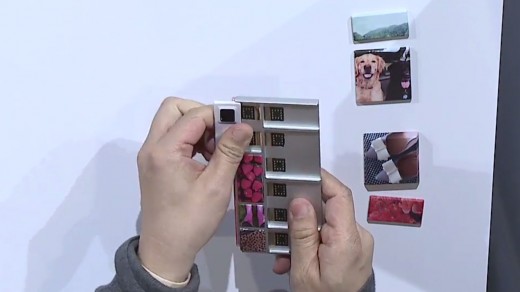
Consumers expect more than pure utility and appealing designs. They want to know that the goods they purchase are developed, produced, marketed, and sold in a manner that respects the environment, the company’s employees, and customers.
This isn’t just starry-eyed idealism speaking. Surveys reveal that 55 percent of online users will pay more for products and services provided by companies that are dedicated to positive social and environmental impact. It’s why companies like TOMS and Warby Parker tout their one-for-one programs and why Apple strives to highlight how eco-friendly it is.
Philosophies, in this sense, are reflected in the physical stamp of the packaging, but the fact remains that regulatory bodies mandate these seals. It’s the hardware designer’s job to embrace an ethos surrounding sustainability and respect for employees, the environment, and consumers. Then, he must share this story.
These narratives can be great for business. Not only are they a great selling point, but they also foster a sense of integrity and purpose in the workplace. This narrative can also have a direct influence on how a product is designed and not only make the world a better place, but also turn out a better product that consumers are proud to own.
Injecting Values Into Hardware: A Case Study on Nest
One company that exemplifies this philosophy is Nest.
Before Nest launched, it’s doubtful that even Honeywell was all that excited about the thermostat. But Tony Fadell set out to take perhaps the most frustrating home device and make it approachable, fun, simple, and useful. In doing so, he did more than just launch a product; he informed customers of what his new company was all about.
Nest says it best on its website: “We take the unloved products in your home and make simple, beautiful, thoughtful things.”
It’s in the word “thoughtful” that we can really dig deep into Nest’s thinking.
Rather than demanding that its customers learn how to use a complicated product, Nest learns from customers and dynamically adjusts heating and cooling accordingly. Nest can check local weather conditions, turn itself off when nobody’s home, and start heating up (or cooling down) the house during the resident’s evening commute. It’s actively working to save consumers time, money, and energy.
Nest is thoughtful because it considers the consumer experience first. It’s like having someone come home before you to turn on the air conditioner on a hot day. If it were a human, it would be a profoundly thoughtful act.
The product’s thoughtfulness is a direct reflection of the values of Nest as a company. Both employees and consumers feel like they’re contributing to a greater public good by reducing the amount of energy being used in the household. The company and the consumer share in a common cause, and this can create a lasting, deep engagement between the two.
Turn an Environmental Philosophy Into a Killer Product
There are many benefits of designing products this way. For Nest and its employees, it creates a sense of pride. They know they’re making a positive change in the lives of customers.
Bringing philosophical values into physical form is difficult, but it works when it’s done properly and congruently. Of course, not many people ever see it, but when they do, they know it.
So how do you take this narrative and use it to inform your own hardware? The simplest way is to go back to the old mantra: Reduce, reuse, and recycle.
Reduce
Build products that last so they won’t be replaced as often. This means choosing high-quality materials during production and extensively testing them to ensure durability and quality. For example, CORDURA EcoMade Fabric is made from post-consumer resources, such as plastic water bottles. This type of durable fabric needs to be replaced less often, reducing waste.
Image credit: Wikipedia
Another way to reduce is to think in terms of simplicity. How simple can this product be? Is there a way to reduce the number of parts while making the product as good, if not better? The Humanscale Diffrient World chairs we just purchased for the office take this approach.
Pushing the boundaries by thinking in terms of what’s necessary rather than what would be “nice to have” can result in continuous innovation.
Reuse
Try to design your products so that all or a portion of them can be reused for something else once they’re past their useful life. Many consumers liken this to an old tire being turned on its side and used as a cheap flowerpot. But it’s so much more than that.
For technology companies, this step is especially difficult — even businesses like Apple are pretty terrible at it. But what’s often seen as a difficulty should really be looked at as an opportunity to innovate.
If more pieces of hardware were designed so their components could be reappropriated in the inevitability of their becoming obsolete, a whole new market could form between the recycled product and newer sourcing for new manufacturing.
Look at something like Project Ara, for example. Rather than getting rid of the entire device when a few components are obsolete, you could upgrade those components and still use the device. You could then combine the ideas of reusing the device with another industry that takes those outdated components and uses them in its services.
The tech sector is never going to be a net-zero energy system, but incorporating this kind of philosophy into the product itself could lead to a new industry.
Recycle
In the case of parts that can’t be reused, recycling is still an option. A product should be designed for disassembly as much as possible so it can be broken down and recycled.
While tech products haven’t traditionally been eco-friendly, this is quickly changing. In addition to tech companies reducing the amount of toxins in their products, innovative startups like Attero are finding new ways to extract (and profit from) the precious metals in these expensive but ultimately disposable products.
Successful products today require more than just form and function to meet consumers’ needs. By keeping your core values in mind throughout the process and considering the three R’s, you’ll not only create a truly attractive product, but also have the potential to innovate in ways you may never have predicted.
Read Next: Why health apps need a social conscience
Image credit: Shutterstock
Get the TNW newsletter
Get the most important tech news in your inbox each week.









